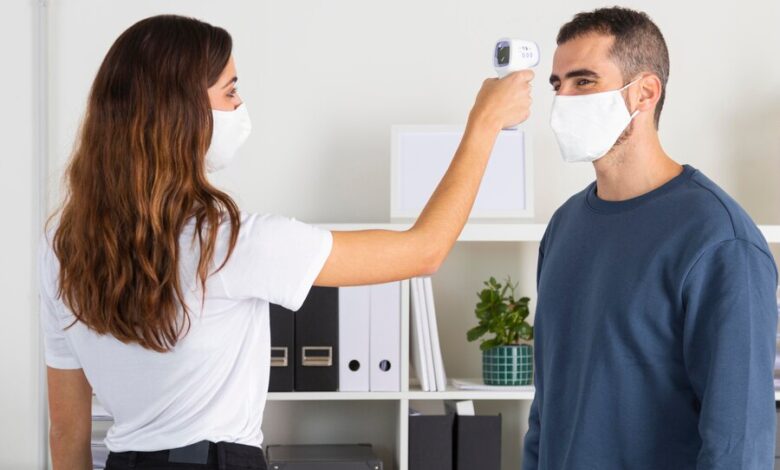The Essential Setup Guide for Yale GLP050VX Toss Sensor

Forklift safety is paramount in any warehouse or industrial setting. Accidents involving forklifts can lead to severe injuries, costly damages, and even fatalities. One innovative solution enhancing forklift safety is the Yale GLP050VX Toss Sensor. This guide will walk you through setting up this crucial device, providing an additional layer of protection in your operations.
The Importance of Forklift Safety
Safety in warehouses and industrial sites cannot be overstated. Forklifts are indispensable tools that streamline operations, but they also pose significant safety risks. The Yale GLP050VX Toss Sensor is designed to mitigate these risks by detecting excessive tilting, reducing the likelihood of tipping incidents.
Warehouse managers, forklift operators, and safety inspectors all play a vital role in maintaining a safe working environment. Understanding the capabilities of safety devices like the Toss Sensor is essential for everyone involved in operations. This guide aims to equip you with the knowledge needed for effective installation and use, ultimately enhancing the safety and efficiency of your workplace.
Discovering the Yale GLP050VX Toss Sensor
The Yale GLP050VX Toss Sensor is an advanced safety device engineered to monitor the tilt of a forklift. It uses cutting-edge technology to detect when a forklift’s tilt angle exceeds safe limits, alerting operators to take corrective action. This capability is crucial in preventing accidents caused by excessive tilting, such as load spills or vehicle overturns.
The sensor’s key features include real-time monitoring, an easy-to-read display, and robust construction to withstand the demands of industrial environments. With its user-friendly interface, operators can quickly adapt to monitoring their forklift’s stability, ensuring smoother and safer operations. The Toss Sensor’s design aligns with the highest safety standards, making it a reliable companion for any forklift.
Getting Ready for Installation
Before embarking on the installation of the Yale Toss Sensor, it’s critical to gather all necessary items. Begin with a comprehensive checklist to ensure you’re fully equipped:
- Yale GLP050VX Toss Sensor Kit: Ensure the kit includes the sensor unit, mounting brackets, cables, and an instruction manual.
- Tools: You’ll need a set of screwdrivers, a drill, and protective gloves. A torque wrench may be necessary for securing fittings.
- Safety Equipment: Personal protective equipment (PPE) such as safety glasses, gloves, and steel-toed boots should be worn during installation to prevent injury.
Preparing for installation involves more than just gathering tools—it’s about ensuring the workspace is safe and conducive to the task. Clear the area around the forklift, ensuring adequate lighting and space to move freely. By setting up a well-organized environment, you’ll facilitate a smooth installation process.
Step-by-Step Installation Guide
Installing the Yale GLP050VX Toss Sensor is a straightforward process when approached methodically. Follow these detailed steps to ensure a secure and efficient installation:
- Mounting the Sensor: Begin by selecting an appropriate location on the forklift mast. The sensor should be positioned to accurately monitor the tilt without obstruction. Use the mounting brackets provided in the kit and secure them with screws, applying appropriate torque as specified in the manual.
- Connecting the Cables: Run the sensor cables neatly along the forklift structure, avoiding areas where they might be pinched or damaged. Use cable ties to secure them in place, ensuring they do not interfere with the forklift’s operation. Connect the cables to the power source and sensor unit as per the instructions.
- Securing the Display Unit: Install the display unit in the operator’s cabin where it is easily visible. This ensures that the operator can monitor the tilt angle in real time, allowing for immediate corrective actions when necessary.
Throughout the installation, consult the visual aids included in the instruction manual. These illustrations provide a clear reference to ensure each component is correctly positioned and secured. Take your time to double-check each step, as a secure installation is crucial for reliable sensor performance.
Testing and Calibration Procedures
Once installed, the Yale Toss Sensor requires thorough testing and calibration to ensure accuracy. Begin by powering up the sensor and checking that all connections are secure. The following steps will guide you through the calibration process:

- Initial Sensor Test: With the forklift on a flat surface, check the sensor’s display for any error messages or alerts. If all systems are operational, proceed to the next step.
- Calibration Routine: Follow the calibration instructions provided in the manual. This usually involves adjusting the sensor settings to align with the specific parameters of your forklift model. Calibration ensures that the sensor accurately detects tilt angles, providing reliable alerts.
- Operational Testing: Conduct a series of controlled maneuvers to test the sensor’s responsiveness. Slowly tilt the forklift to various angles and observe the sensor’s alerts. This real-world testing confirms that the sensor functions correctly under typical operating conditions.
Calibration is not a one-time task; it should be performed regularly as part of routine forklift maintenance. Regular testing and recalibration ensure that the sensor maintains its accuracy, providing continuous safety benefits.
Enhancing Safety and Best Practices
Integrating the Yale Toss Sensor into your forklift operations delivers significant safety improvements. The sensor’s ability to detect unsafe tilt angles helps prevent accidents, protecting both operators and warehouse assets. However, the sensor is just one component of a comprehensive safety strategy.
To maximize the benefits of the Toss Sensor, consider implementing the following best practices:
- Regular Training: Ensure all forklift operators are trained on using the sensor effectively. Understanding how to interpret the sensor’s alerts and take appropriate action is essential for maintaining safety.
- Routine Maintenance: Include the sensor in your regular maintenance schedule. Check for any signs of wear or damage, and recalibrate as needed to ensure optimal performance.
- Safety Culture: Foster a culture of safety within your organization. Encourage open communication about safety concerns and promote adherence to established safety protocols.
By integrating these practices, you reinforce the role of the Toss Sensor in your overall safety strategy. It becomes a valuable tool in creating a safer, more efficient workplace.
Wrapping Up Your Installation Journey
The Yale GLP050VX Toss Sensor is a powerful ally in your quest for enhanced forklift safety. By understanding its features, preparing thoroughly, and following a methodical installation process, you ensure that your forklift operations are safer and more efficient.
Remember, safety is an ongoing commitment. Regular testing, calibration, and operator training are essential to maintaining the sensor’s accuracy and reliability. By investing in these practices, you protect your workforce and optimize your warehouse operations.
For more information on safety enhancements and best practices, explore our additional resources or reach out to our expert team. We’ve got you covered every step of the way in your safety journey.



